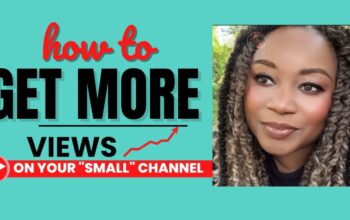If you’ve been in the affiliate marketing and online marketing space for a while, it’s easy to have a head full of advanced tactics and marketing ideas to help you reach your audience. While these tactics are great, and are often worth implementing, we don’t often hear industry leaders talk about the fundamentals.
Good SEO is the foundation of your affiliate marketing and online business success. Ads are great, and will always be a way to “pay to play” or give you another traffic stream, but great SEO will give you organic traffic that can make you truly profitable.
What is SEO?
But what is SEO? I expect you already know the basics, but we’ll cover them as a reminder. SEO stands for search engine optimization. This includes a wide range of different things you can do online to help your website and its pages show up organically when someone searches.
This can range from making sure you use keywords and a good structure to your site, to editing meta tags and gaining backlinks.
Can I Do SEO on My Own?
Yes! Fortunately, SEO is very doable on your own, provided you’re willing to put in the time to learn the lingo, what you should do, and importantly, why you should do it. There are, of course, services that will manage your SEO for you. However, since you’re in the world of affiliate marketing, we’re going to assume you’re looking to maximize your profit margin and want to do it yourself.
How Do You Do SEO Step-by-Step?
So… how do you actually put good SEO practices into place? Let’s start with 5 basic steps you can take to create good SEO results.
Step 1: Know What Your Audience is Searching For
Note the word “know” isn’t the word “assume.” It’s very easy to think that if you’re promoting weight loss products they’ll be directly searching for those terms, but this isn’t always the case. When you assume or go for on-the-nose keywords, you end up fighting it out with all the biggest brands and highly authoritative sites.
For example, searching “how to lose weight” will churn out results from Healthline, government organizations, and major magazines. Instead, do some research and find out what longtail keywords they are searching for. Google Trends is an excellent free place to start, and of course, if you have an ads account or a keyword research tool, that’s even better.
Step 2: Brainstorm Content These Searchers Want to See
Your next step is to take those keywords and brainstorm the different topics and pieces of content you can create that can use these keywords. This has to be content you believe these searchers will actually want to read. If you discover “how to burn belly fat” is a major search term for you, think about the different angles that would make this article more clickable.
Step 3: Create the Content and Implement SEO Practices
Start creating the content you’ve planned, and ensure you have good SEO practices in these articles or on your pages. Neil Patel has a great article on this and is an expert worth listening to in the future to learn more about good SEO practices.
Step 4: Consider Spying on Competition
No – we’re not looking into the world of Black Hat SEO (aka the dark side) or anything bad, we’re just going to peep over the fence to see what our closest neighbors are doing. One of the best ways to find great topics to cover, be it on an article on your site or through other avenues of content like YouTube, is to see what articles are performing best for them.
Consider looking at Neil Patel’s Ubersuggest, or another similar tool, which allows you to enter a web address and see which pages get the most traffic. Not only can you find relevant high-ranking article topics, but you can read those articles and do them better.
Step 5: Keep Up on Supporting SEO
What do I mean by this? I mean don’t get lazy as you continue to upload content. Pay attention to your URLs – they should be short and keyword relevant. Include images where appropriate, and optimize their metadata. (It sounds irrelevant, but Google says it helps, and it will help you show up in image searches.) Plugins like Yoast SEO and Rank Math SEO are great for this for WordPress sites.
Finally, continue to do this often until you see real traction. You often hear successful affiliate marketers talking about how they are able to “set it and forget it” with a number of their sites, but don’t set up a site and expect it to happen without looking at the analytics. Continue to add to the site regularly with relevant content and then ease off if you aim is hands-free affiliate sites.

Jay Jay Ghatt is also editor at Techyaya.com, founder of the JayJayGhatt.com and JayJayGhatt.com where she teaches online creators how to navigate digital entrepreneurship and offers Do-It-For-You Blogging Service. She manages her lifestyle sites BellyitchBlog, Jenebaspeaks and JJBraids.com and is the founder of BlackWomenTech.com 200 Black Women in Tech On Twitter. Her biz podcast 10 Minute Podcast is available on iTunes and Player.fm. Follow her on Twitter at @Jenebaspeaks. Buy her templates over at her legal and business templates on Etsy shop!



